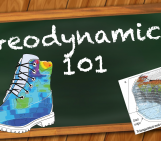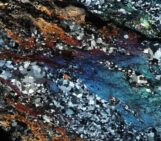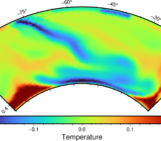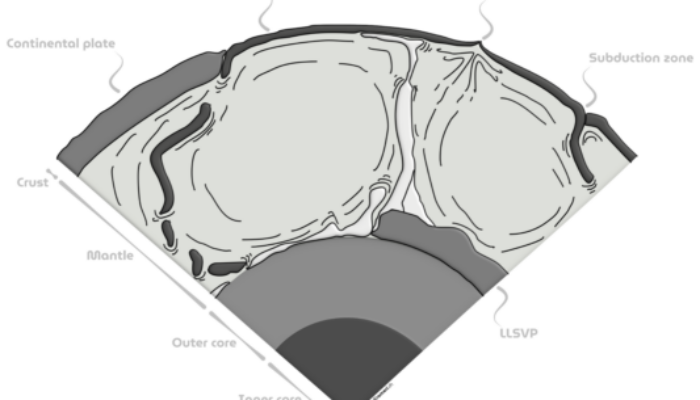
“Dynamics of Plate Tectonics and Mantle Convection,” is edited by Dr. João C. Duarte and published by Elsevier. The book brings together contributions from more than 40 renowned authors in the fields of geology, geodynamics, tectonics, petrology and geophysics. It offers the unique authors’ perspective on the interconnected processes of plate tectonics and mantle convection and their views on fundamental questions about the forces driving plate’s motion, the supercontinent cycle, and the evolution of tectonics over Earth’s history, with some hints to other worlds. Available in both print and ebook formats, this book is an essential resource for geoscientists and students seeking to deepen their understanding of the Earth’s dynamic system and modern plate tectonics. In this week’s post, I had the pleasure to talk João C. Duarte about the behind-the-scenes of this project.
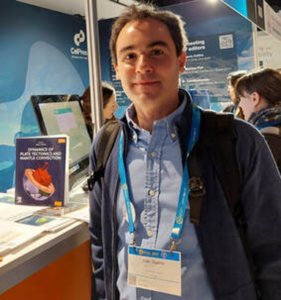
João C. Duarte (https://joaocduarte.weebly.com/) is an Assistant Professor in Tectonics at the University of Lisbon (Ciências ULisboa) and a researcher at the Instituto Dom Luiz (https://idl.ciencias.ulisboa.pt/joao-c-duarte). His work focuses on tectonics, geodynamics, and marine geology, in particular on how subduction zones invade pristine oceans and its consequences for the supercontinent cycle. João is also an editorial board member of Communications Earth & Environment, a fellow of the Lisbon Academy of Sciences and the incoming president of the European Geosciences Union’s Tectonics and Structural Geology Division.
What was your motivation/philosophy behind the edition of a new book on geodynamics? How does this book differ from other classical books on geodynamics?
I work at a University and often visit schools for talks. A few years ago, started to realise that there was a mismatch between what was taught and what I listened to at the conferences by experts. The knowledge of plate tectonics was somewhat crystalliszed in the discoveries the 60s. Plate tectonics was a brilliant scientific revolution, but in its classical form, it was mostly a kinematic theory of plate motion. Although most of the driving mechanisms were soon worked out, this knowledge has not penetrated the educational systems yet. Also, when plate tectonics was developed, geoscientists knew almost nothing about the internal structure of the mantle as revealed later by seismic tomography and geodynamic numerical modelling was still in its pre-history. This has changed radically in the last two decades. We are now developing a fully dynamic theory of plate tectonics and mantle convection, in which plates and mantle flow are regarded as part of a single dynamic system. This theory now includes different tectono-convective modes that can be applied to the evolution of the Earth and other terrestrial bodies. In I believe that, in a certain way, we are undergoing another revolution in Earth sciences. As a consequence, many books are becoming outdated. The motivation for this volume was to capture and compile these new ideas in a single volume. This is not a textbook with consolidated knowledge and it is not amalgamation of case study papers. This is a collection of perspective papers exploring some of the most interesting ideas and problems we are dealing with at the moment.
“I love to communicate science and I think it is a vital part of the scientific process”
From the editorial point of view, what was the most challenging aspect of editing this book (e.g working with so many renowned authors)? How did you handle the different writing styles of the authors?
Producing a volume like this is a huge amount of work that requires an enormous amount of time, dedication and organisation. Motivation was not a problem. I always felt I was doing something of value. But time is something academics do not have much these days. But I really wanted to do this, so I had to make it a hobby (something you do in your spare time with pleasure). Thankfully, my family knows this is my passion and fully supports it. During the process, I exchanged thousands of emails and read/reviewed/edited all of the twenty-four chapters at least six times. Dealing with the authors was easy. These are some of the people I most respect in science and being able to work with them was a privilege. They were all excited about the idea and always listened to my suggestions. They made it easy for me. Also, this was the fourth book I edited, so when I started it, I knew how to keep things clear and organiszed from the beginning. One of the biggest challenges was to make sure all the contributions fit nicely. Initially, I thought the chapters should have similar structures and styles, but soon I realised they all had to be different. It’s this diversity that makes this book special. One thing that I like, is that some of the authors included a personal perspective. This makes of this book much more than just a collection of chapters, it gives it a soul.
(…) some of the authors included a personal perspective. This makes of this book much more than just a collection of chapters, it gives it a soul.
What was the most rewarding part of editing this book? Any anecdotes you’d like to highlight and share?
The most rewarding part was to be able to work with the authors closely, and also when many told me they wrote pieces they always wanted to write. There was also a moment when I was the only person in the world who had read all twenty-four chapters. I felt privileged for that. One anecdote. Before reaching out to Elsevier, I actually tried to submit this project to another publisher. I had had two extremely good experiences with Elsevier, but I wanted to try another publisher. During an EGU meeting, I contacted an editor of one of these publishers from a top-ranked university and all went smoothly. I contacted the authors and submitted the proposal, which was then reviewed and accepted without major issues. One day, the in-house editor sent me an email saying that a board of the university “asked” me to add a renowned scientist as co-editor, or otherwise they would drop the book. This co-editor would not do much, they said, but their name would be on the cover for marketing purposes. I found this senseless and offensive and said no. This was a critical moment, as I had to go back to the authors and tell them I had dropped the publisher. But their support was incredible! Everyone supported my decision and became even more motivated. I will always be thankful to them!
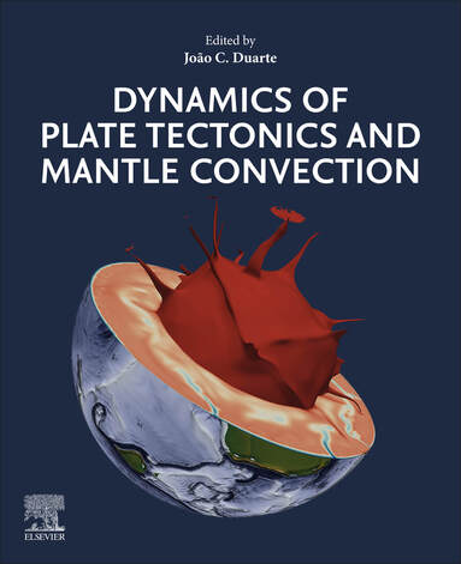
“Dynamics of Plate Tectonics and Mantle Convection,” is edited by João C. Duarte and published by Elsevier.
How do you think this book will impact its readers and the broader geodynamics and tectonics community?
I think readers will find many incredible ideas in this book that will not be able to find anywhere else. Or, at least without having to dig deep into the specialised literature. Here, it is all in one volume, written in a relatively accessible manner. I think this can be useful to everyone, but especially for students and early careers who want to have a quick snapshot of what we know about plate tectonics and geodynamics. In a few years, parts of this book will inevitably become outdated, but it can then work as a historical document for people in the future to have an idea of what we know now. There are also many stories in the book about the roots of geodynamics that are timeless. This is the magic of books!
readers will find many incredible ideas in this book that will not be able to find anywhere else.
Any other projects are you currently working on or planning to work on in the near future?
When you finish a project like this, you always say it is the last one. It is an exhausting task. A few months after, some other ideas start to pop up in your mind… But some of my closest colleagues keep telling me I should stop editing books. They see this have a toll on my productivity. If you look at my papers, you will see I do not publish a lot as a first author. This is in part because I spend a lot of my time working on these projects. But what can I do? I love books! I was born in a house full of books and they have always been my passion. The plan now is to focus on writing my own books. I started writing a popular science book on the search for the 1755 Great Lisbon Earthquake, but I do not have a publisher yet. I am also halfway through the writing of a popular science book on plate tectonics directed to school teachers and students in Portugal (I have been publishing some of these texts on my blog: https://joaocduarte.weebly.com/blog). Publishing a couple of popular science books is my biggest professional dream! I love to communicate science and I think it is a vital part of the scientific process. Finally, I recently became involved in planetary sciences and co-convened a workshop on the Geosciences of Exoplanets at ISSI (International Space Science Institute). We are now putting together a new volume and I will be one of the co-editors. I guess I will never stop…
A last word you’d like to share with us?
A project like this takes some effort, but it is extremely gratifying. It is a unique feeling when you have a physical copy in your hands for the first time. The book is now out in the world and I hope the reader can find in it what you are looking for. I look forward to your feedback!
References Crameri, F., G.E. Shephard, and C.P. Conrad, (2019), Plate Tectonics☆, Reference Module in Earth Systems and Environmental Sciences, Elsevier, doi:10.1016/B978-0-12-409548-9.12393-0

